You turn on your computer, scan your inbox with more than 20 unread emails, realize you have 5 hours of meetings, and then go to your chat app to find a huge list of high-priority tasks to tackle and get other teammates involved in. You say to yourself… how am I supposed to get all of this done today?
Managers and makers alike deal with a substantial amount of tasks every day. Between juggling projects, answering emails, grabbing a midday snack, and jumping in and out of video meetings, how can you decide which tasks to tackle first? How do you know which tasks each of your teammates are working on? How do you identify possible bottlenecks if a task is not completed on time?

Managing a task goes beyond creating a simple to-do list and tackling it. In order to prioritize tasks, manage your time, and meet deadlines, you need a sure-fire process. That’s called task management. Let’s deep dive into it!
What Is Task Management?
Task management is the process of prioritizing a task, understanding the steps from beginning to end, delegating subtasks to teammates, and setting deadlines to make sure everything gets done on time.
A task can be something as simple as sending an email, to something more complex like creating an Ebook. The latter will require a more robust workflow and subtasks to get it done, such as writing, editing, creating the design, formatting it into a PDF, and so on. The majority of those tasks might also require different deadlines and teammates.
That’s why it’s often important to look at task management as a group exercise rather than on an individual level. This way you can stay on top of your work and help your team hit their deadlines. Another key benefit of managing tasks is being able to keep a balanced workload. With the flexibility to adjust and delegate tasks and deadlines, you’re preventing you and your teammates from being overworked.
How To Manage Your Team’s Tasks With Ease
With your team’s work spread among multiple different projects, and probably across multiple time zones, it’s easy to lose track of progress and hiccups that may arise on the way.
Using a tool to manage your team’s tasks will help you create a transparent process where everyone knows what’s going on and what one’s role is in the process, preventing blockers for the entire team and unnecessary stress for you.
If you’re looking for a way to easily manage your tasks and your team’s tasks, here are some solutions to start with by using none other than… Trello!
Create A Transparent Workflow
The first thing you need to determine is the big, long list of steps that a task needs to flow through in order to reach its ‘Done’ phase. A workflow can be as simple as ‘To-Do, Doing, Done’ to something much more complex like ‘Gathering Ideas, Writing, Editing, Creating Design, Scheduling, and Publishing’.
Imagine keeping track of the state of a task in an email chain? Multiply those tasks with the number of projects and people you manage. Urgh! No wonder you start your day with sky-high stress.
Alas, there is indeed a better way of tracking all of the things you need to, well, keep track of. Trello! Visualizing your processes on a Trello board is a great way to improve transparency in order to see who is working on what, and where a task or project falls in the stages of completion. This level of transparency is difficult to achieve when all communication is locked away in an email thread and key information is stuck in various documents on your computer.
Here are three examples of Trello Templates that can help optimize transparency in teamwork and minimize feeling overwhelmed:
- Kanban Template: This board helps you visualize all tasks, limit tasks in progress, and maximize the efficiency of your team’s work.
- OKR Board: With this Trello board, you can create a new level of organizational transparency to view the progress of top-level tasks initiatives and team priorities.
- Project Management: This board has the basic structure to build your team’s ideal workflow for tasks within big or small projects.
Prioritize Your Team’s Tasks
It’s time to start prioritizing your most important tasks. But how?
There are a few prioritization methods that reign supreme. All you have to do is pick one that you feel most comfortable with and get started. Here are a couple of examples:
- Eisenhower Method:A simple framework that helps you batch tasks into four priority levels (Important/Not Important/Urgent/Not Urgent).
- Prioritization Matrix: A technique that can be used either at the team or department level to define priorities as must-haves, nice-to-haves, and won’t-do-right-nows.
Once you’ve established the level of importance of each task, you can use Labels on your Trello Board to quickly identify what needs immediate action. There’s even a color-blind friendly feature!
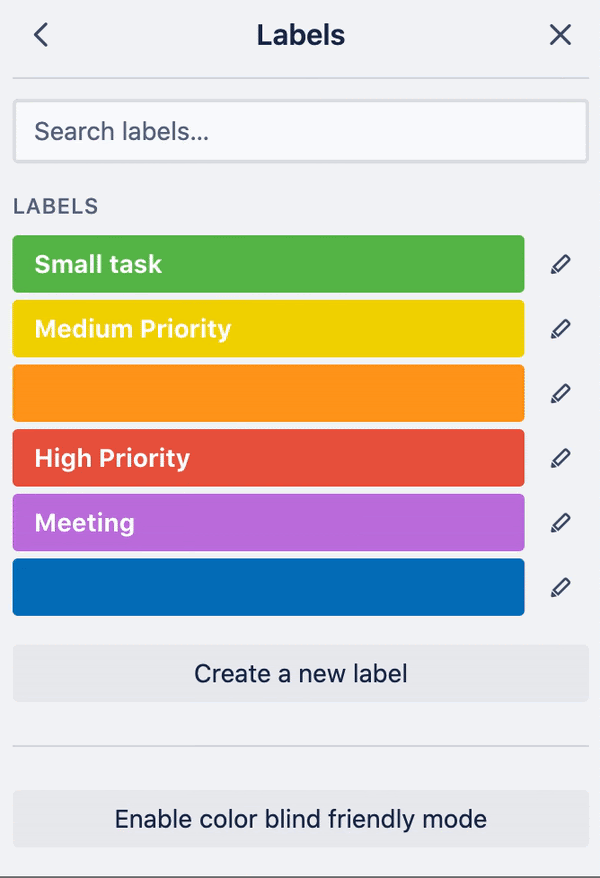
Another way to establish priorities within your Trello board is by using the Card Priority Power-Up. It allows you to set priorities and sort cards according to their importance by configuring the names of the priority levels. The cards with the highest priority display a red badge in the card front so that you can quickly see which cards are the neediest and require your attention now.
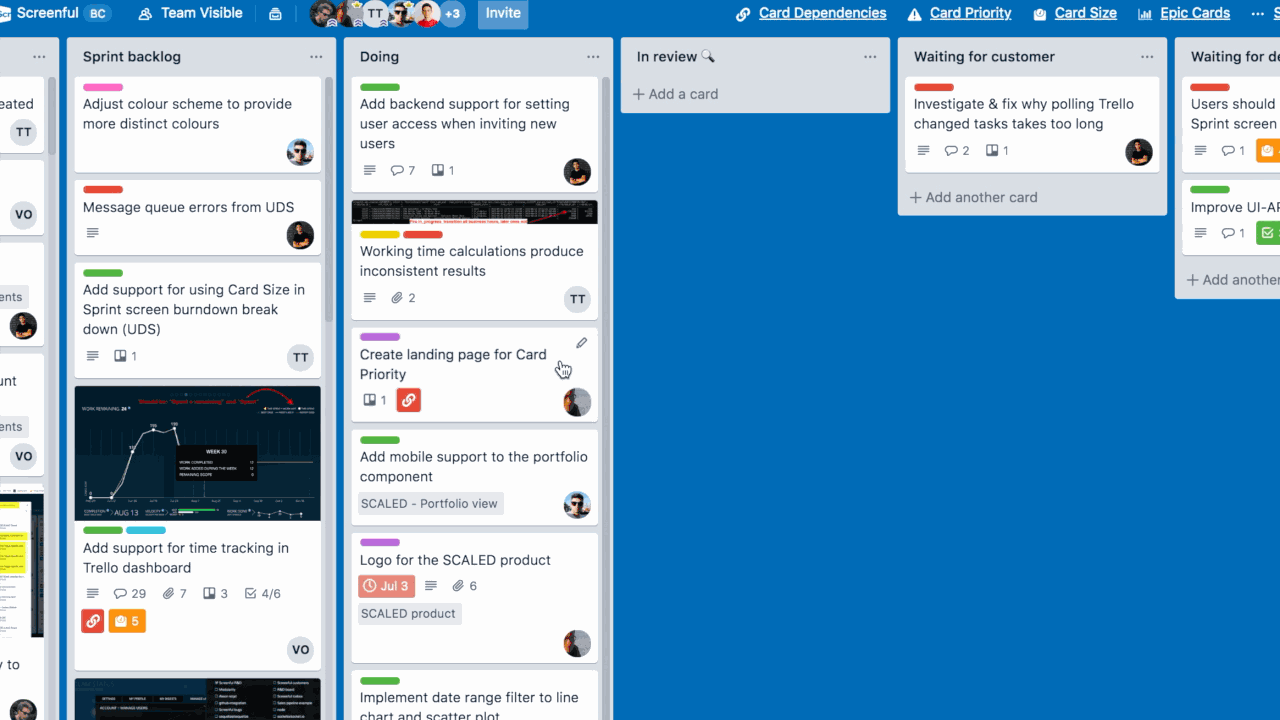
Keep Everyone On The Same Page
Regardless of team size, collaboration is key to make sure a task is completed in time. A tried and true collaboration best practice is to keep everyone organized and on the same page by sharing all files, feedback, notes, ideas, and project history in your Trello board.
Establish a common place, like a list on your Trello board, with all the important resources your team may need while working through tasks. That way, team members can tap into the same pool of knowledge whenever they need to—avoiding that constant ping “hey, where’s the timeline for this project?”
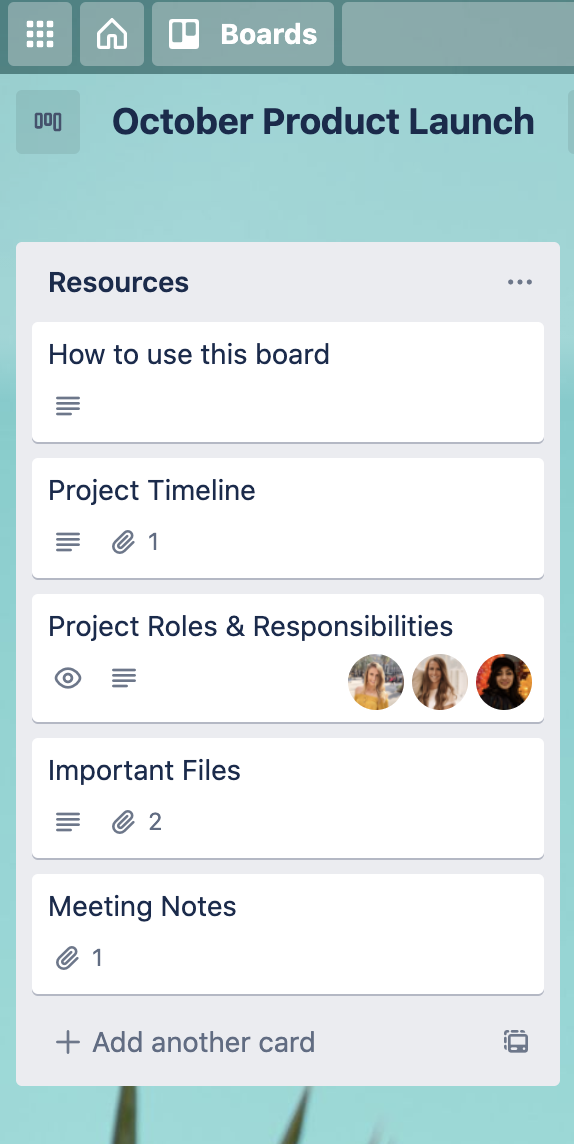
Keep Workload Balanced And On Track
Harvard Business Review recently found that workers spend 41% of their time, on average, focusing on less important tasks that could easily be delegated to others.
Tracking tasks transparently within a workflow allows everyone to understand which tasks are more important or require more time, so teams can plan their time and more effectively meet deadlines.
In Trello, users of Business Class and Enterprise can use Advanced Checklists to assign members and due dates to checklist items so everyone knows who is doing what and when in one single card view. If you prefer, you can also view these checklist tasks in Calendar view, as well as in the ‘Your Items’ tab on your Trello Home screen.
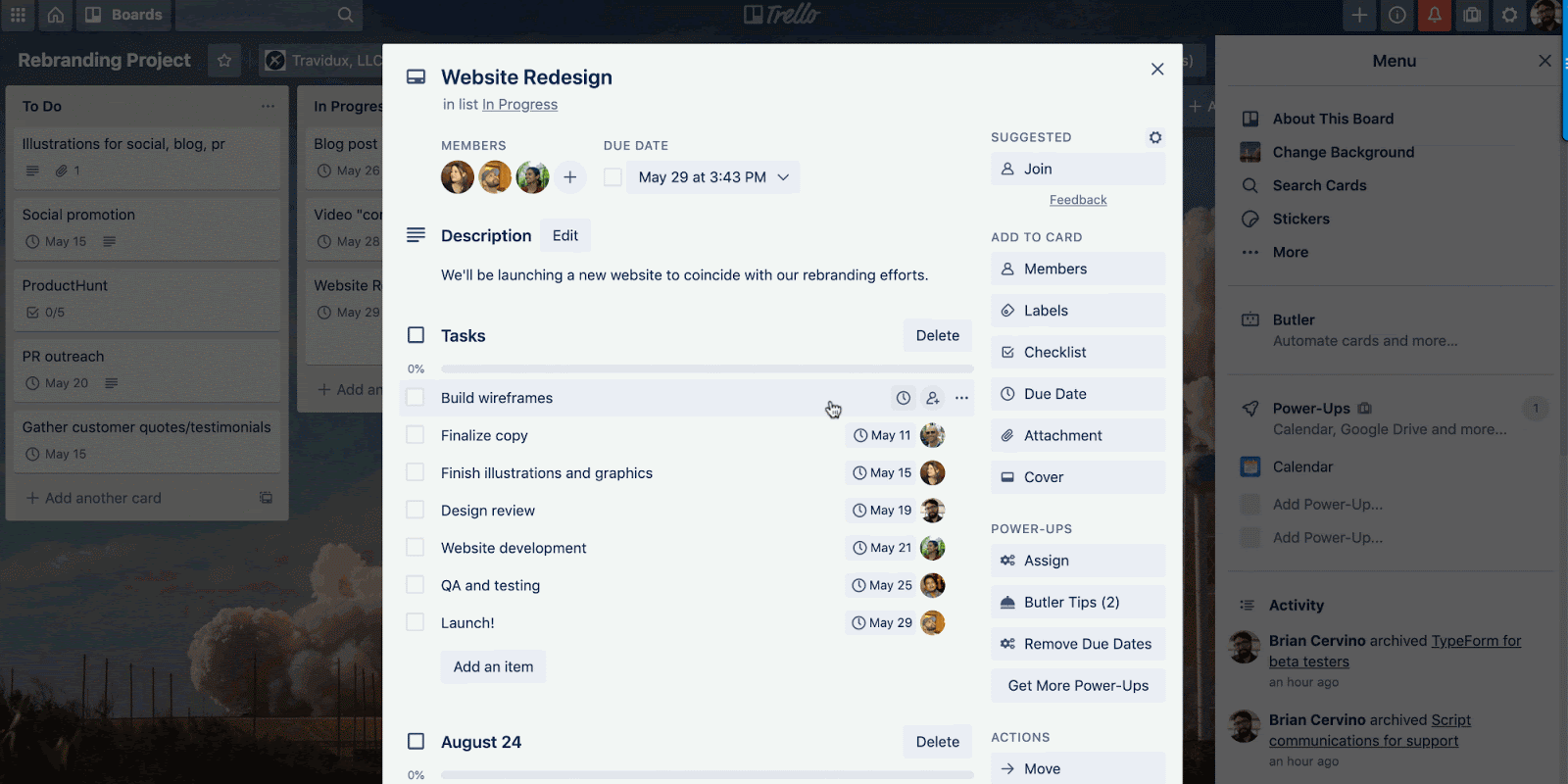
Automate Tasks To Improve Your Team’s Productivity
Not every task needs human interaction in order to be completed. A few steps can actually be taken care of with automation tools . At Trello we have Butler—your personal robot that organizes your Trello board and tasks the way you want without you needing to lift a finger.
Butler allows teams to boost productivity and remove mental overhead by creating rules, commands, and buttons that can perform almost any task you throw its way. Here are some tasks you can automate to improve your team’s efficiency:
- Create recurring tasks like “Create X card every Monday” or “Create a new list at the first of every month”
- Move a card to the “Done” list or the next step when all checklist items are completed.
- Assign a member to a card when a card is moved to a specific list.
- And much more!
Celebrate The Small Stuff (And The Big Wins!)
Now that you’re feeling empowered to tackle your to-do list more efficiently, it’s time to paint the town red. Celebrating small and big wins is an important way to track incremental achievements and work toward much larger goals. A study by Harvard Business Review found that capturing small wins every day enhances worker motivation.
At Trello, we want to celebrate every task your team moves over to the “Done” list. See a smile growing on your team’s face with a literal confetti explosion on their screen. Simply add to the title of the list of your choice.
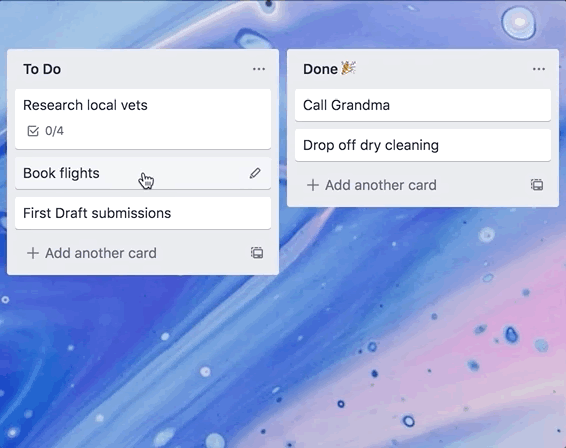
And remember, task management is all about prioritizing tasks, understanding the process from beginning to end, assigning and managing tasks to reach its completion phase, and celebrating the journey.
Good or bad, we’d love to hear your thoughts. Find us on Twitter (@trello)!
Next: Struggling To Focus? How To Be Accountable While Working Remotely
